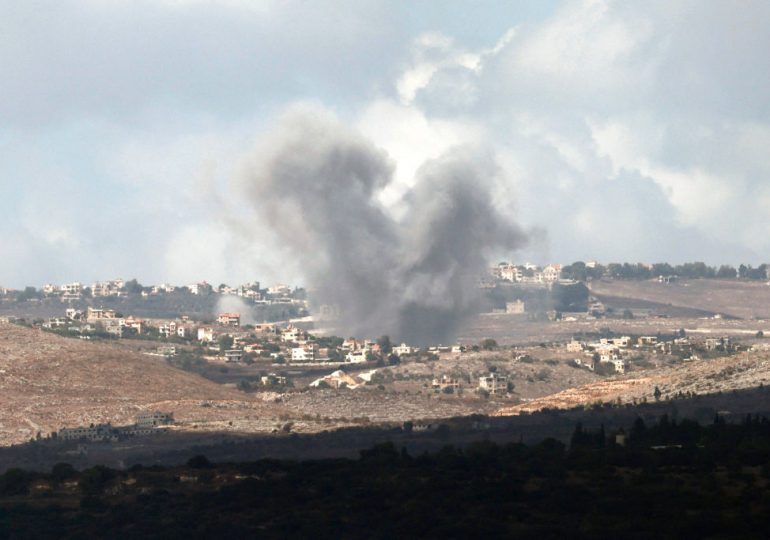“There are decades when nothing happens, and there are weeks when decades happen,” Vladimir Lenin is famously quoted as saying. Over the past week, Israel has detonated thousands of pagers and walkie-talkies carried by Hezbollah members in a highly sophisticated attack that killed at least 39 people and wounded 3,000. Then came hundreds of air strikes throughout Lebanon since Monday that killed at least 558 people, including 94 women and 50 children, in the deadliest day for the country in decades.
[time-brightcove not-tgx=”true”]
The ostensible target of these attacks is the militant group Hezbollah. The sheer scale and scope have knocked the world’s most powerful non-state actor off-balance by decapitating a significant portion of its military leadership, including its chief of staff, its head of special operations, and key members of its elite fighting units, the Radwan Forces.
The concurrent blows Israel has delivered to its Iranian-backed arch nemesis are extraordinary, even when measured against the backdrop of a tumultuous Middle East.
Read More: The Coming Israel-Hezbollah War
But will Israeli Prime Minister Benjamin Netanyahu achieve his new war objective of returning tens of thousands of displaced Israelis to their homes in the north? Without a ceasefire in Gaza; unlikely.
It’s hard to imagine Hezbollah ending its near-daily cross-border fire into Israel, given Iran’s “unity of fronts” strategy, which it proclaimed after Hamas’ Oct. 7 attacks. Hezbollah is the brightest flame among Iran’s “ring of fire” encircling Israel that includes allied militant groups in Syria, Iraq, Yemen, and of course, Gaza itself.
Netanyahu, a veteran soldier turned shrewd politician, probably understands that the price he is demanding is too high for Hezbollah or its Iranian backers to pay. This raises the question of whether Netanyahu’s main war objective in Lebanon is the return of displaced Israelis to their homes in the north, or if that is merely a cover for carrying out a campaign that significantly degrades Iran’s crown jewel.
It is a question similar to the one many Israelis ask when they wonder if Netanyahu’s main objective in Gaza is returning the Israeli hostages, or the complete destruction of Hamas. And, of course, the prolonged military campaigns allow Netanyahu to postpone his day of reckoning, when he is expected to be held accountable for the significant security failures on Oct. 7.
Read More: How Netanyahu Undermined Israel’s Security
But ending Hezbollah’s rocket fire and completely destroying Hamas are not realistic war goals. Whenever Israel exhausts its military options in Lebanon—after every known Hezbollah target has been pounded repeatedly, at an immense human cost, without achieving an end to Hezbollah rocket fire—it will have to return to the diplomatic track.
Netanyahu, through the formidable Israeli military at his disposal, will face the reality that he can influence the terms of the political settlement in Lebanon and in Gaza, but he cannot rewrite the entire geopolitical equation by forcing a firewall between the two.
The Biden-Harris Administration has long understood that a ceasefire in Gaza is necessary to unlocking a deal in Lebanon. President Joe Biden’s point person on the matter, Amos Hochstein, spent months negotiating the details of a new security arrangement for South Lebanon that is acceptable to both the Israeli military establishment and Hezbollah. It includes the withdrawal of Hezbollah forces away from the Israel border in return for Israeli redeployment from some contested border points. It also entails a monitoring and enforcement mechanism, a key Israeli demand, set up by the U.S. and France.
As such, Israel’s war in Lebanon is less about the terms of a settlement than undercutting Iran and bringing Hamas to heel in Gaza. Understanding he is unlikely to split the two, Netanyahu’s fallback is to bring such tremendous military pressure on Hezbollah that it, along with its Iranian patron, would press Hamas to accept a ceasefire favorable to Israel. This would allow Hezbollah to then follow suit without being seen to abandon the Palestinian cause. Senior U.S. officials have in recent weeks suggested as much to both Hezbollah and Iran, but to no avail.
It is not clear if Iran and Hezbollah can wield such leverage over Hamas leader Yahya Sinwar. Sinwar, whose exact whereabouts in Gaza are unknown, has long sought to broaden the Israel-Hamas war in the hope of improving his diminished military standing. Given the dramatic escalation between Hezbollah and Israel, Sinwar is only likely to harden his negotiating position.
Confronted with the Gordian Knot of Gaza and Lebanon, and with Netanyahu’s plan of “escalating to de-escalate,” the U.S. strategy for resolving the conflict has collapsed. Biden remains committed to assisting Israel and deterring Iran, but there is virtually no political will to pressure Netanyahu into a political settlement ahead of a closely fought U.S. election in November.
Abandoned to its own devices, the Middle East finds itself in a dangerous standoff—a violent test of wills and capabilities between hardened adversaries where no one can win. Once again, Lebanon is the stage for a tragedy that has only begun to unfold.
Leave a comment








